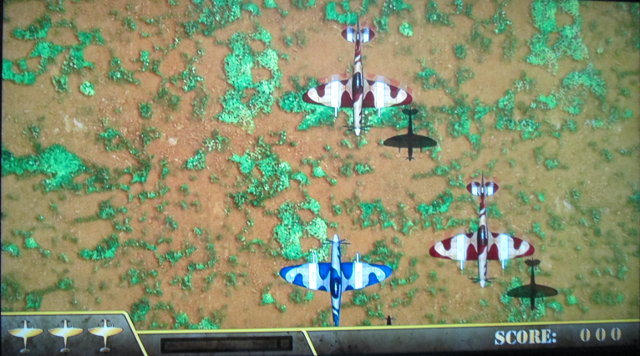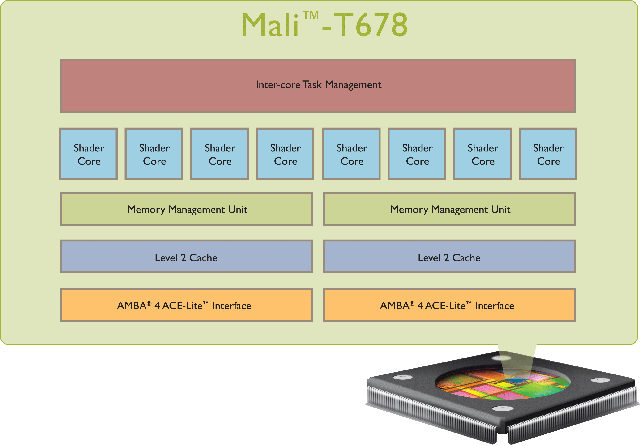Karim Yaghmour, Opersys inc, talks about the internals of the Android user interface at Embedded Linux Conference Europe on November 5, 2012. Abstract: Android is a very complex stack comprising several dozens of novel components and moving parts. Still, it’s intrinsically a user-centric system and, therefore, its parts which deal with user interface are of special interest for anyone aiming to put Android in a device. This talk will examine the internals of Android’s user-facing components. Specifically, we will cover the inner-workings and interactions of the Window Manager, Surface Flinger, Input Method Manager, and the rest of the system. We will also cover key display and input components such as the Status Bar, Soft Keyboard and Notifications. This talk will be especially useful to developers intending to use Android in user-facing embedded systems, those needing to implement support for their graphics hardware and anyone interested in the internals of Android’s […]
Piglit OpenGL Driver Testing Framework Now Works with ARM Linux & OpenGL ES
Piglit is a collection of automated tests for OpenGL implementations that aims at improving the quality of open source OpenGL drivers by providing developers with a simple means to perform regression tests. ARM SoCs that come with a GPU usually (always?) supports OpenGL ES however. That’s why, Tom Gall (Linaro) has modified Piglit in order to bring this test suite to ARM Linux and OpenGL ES. There are about 6,900 OpenGL tests in Piglit, and currently 1,047 Piglit (OpenGL ES) tests can run on ARM . Tom also explains that piglit developers are now using waffle, a cross-platform C library that allows one to defer selection of GL API and window system until runtime. This will allow your to select the variation of the GL API (GL, GL ES) and windowing system (X11, Wayland…) you want to use at runtime. The code is still heavily modified, but it’s in the […]
libavg on Raspberry Pi
libavg development team has recently announced a beta port of their multimedia library to the Raspberry Pi. libavg is a high-level development platform for media-centric applications using Python as scripting language and written in C++. I came to know this platform as I tried Xibo Digital Signage, and I tested it on ARM platforms. Up to know this would only work using software rendering/decoding, and everything was painfully slow on ARM, but libavg developers are now making use of OpenGL ES to boost graphics speed. More work is needed, and they intend to eventually support features such as hardware video decoding (OpenMAX possibly via gstreamer) and compressed textures. Installing libavg on Raspberry Pi. Pre-built packages are available for Raspberry, so installation is pretty straight forward:
|
1 2 3 4 5 |
sudo apt-get install libxml2 libpango1.0-0 librsvg2-2 libgdk-pixbuf2.0-0 \ libavcodec53 libavformat53 libswscale2 libboost-python1.49.0 \ libboost-thread1.49.0 libsdl1.2debian libxxf86vm1 wget https://www.libavg.de/site/attachments/download/190 -O libavg-raspberry.tar.bz2 sudo tar -C /usr/local -xjf libavg-raspberry.tar.bz2 |
Running Samples Apps 32 samples are located in /usr/local/lib/python2.7/dist-packages/libavg/samples/ directory, and they rely on X11, so first start LXDE:
|
1 |
startx |
Open a serial console (LXTerminal) […]
2D/3D Graphics Linux Demo (X11, EGL, GLES2, Qt4) on AllWinner A10 Tablet
Xlab (Maxim Kouprianov) has tested 2D & 3D capabilities of AllWinner A10 SoC (with Mali-400 GPU) on a Ployer MOMO11 Bird Edition tablet running OpenEmbedded with kernel 3.0.52+ testing X11, EGL, OpenGL ES2 and Qt4 on the platform, and the results are pretty smooth as you can see in the video below, although there appears to be some flickering in LunaSysMgr demo. The tools used in the demos are xfwm4 (Xfce Windows Manager), es2gears_x11, cube (Qt), LunaSysMgr (Qt/WebOS) and glmark2-es2. Qt4 acceleration is done via XlibGL platform which in turns uses X11-EGL. He used the Mali drivers version r3p0 (mali400-gles20-gles11-linux-x11-ump) and xf86-video-mali on sunxi-linux github repository mainly maintained by rz2k. You can get more details on how to build Mali-400 support for AllWinner A10 on http://linux-sunxi.org/Mali400, and GPU benchmark results for A10 show the drivers seem to work as expected. Jean-Luc Aufranc (CNXSoft)Jean-Luc started CNX Software in 2010 as a part-time […]
ARM Demonstrates Mali-T604 GPU in Samsung Exynos 5 Dual Cortex A15 Processor
For the very first time, ARM showcased on of their latest GPU, the Mali T-604, at SIGGRAPH 2012. There were 3 demos running in a tablet reference platform based on Samsung Exynos 5 Dual Cortex A15 processor clocked at 1.7 GHz: Timbuktu 2 showing improvement brought by OpenGL ES 3.0 such as higher details buffers, shadow comparison, etc… Hauntheim showcasing multiple lightings accelerated with GLES 3.0 and OpenCL (GPU compute) Enlighten, a demo where you can adjust the sun position and see the building shadows move smoothly in real-time.
ARM Announces 3 New Midgard GPUs – Mali-T624, Mali-T628 and Mali-T678
ARM announced the second generation of the Mali-T600 Series GPUs targeting tablets, smartphones and smart TVs. Those new GPUs provide up to 50% performance increase over the first generation Midgard GPUs (T-604 & T-658) and include support for Adaptive Scalable Texture Compression (ASTC), a texture compression technique. The company explains that ASTC significantly optimizes GPU performance and increases battery life in devices. Those 3 new GPUs based on Mali Midgard architecture are named as follows: Mali-T624 – 1 to 4 cores – Market: Smartphones and smart-Tvs Mali-T628 – 5 to 8 cores – Market: Smartphones and smart-Tvs Mali-T678 – Up to 8 cores, 4x the GPU compute performance of Mali-T628 – Market: Tablets As with previous Midgard GPUs, the new GPUs support GPU compute with improves performance and energy-efficiency for math intensive activities, such as: Computational photography – computational methods of enhancing or extending digital photography Multi perspective views – […]
Ziilabs ZMS-40 Decodes 6 HD Videos and Maps them to 3D Objects Simultaneously!
Ziilabs uploaded an impressive video that shows the Ziilabs ZMS-40 simultaneously decoding 6 High Definition Videos (although they don’t say if it’s 720p or 1080p) with 5 H.264 videos and 1 VP8/WebM video and rendering them on 3D objects via OpenGL ES. That’s quite amazing, but the next question could be why would you need that much processing power in a chip aimed at tablets? Augmented reality perhaps… Jean-Luc Aufranc (CNXSoft)Jean-Luc started CNX Software in 2010 as a part-time endeavor, before quitting his job as a software engineering manager, and starting to write daily news, and reviews full time later in 2011. www.cnx-software.com
Nokia Qt Labs Releases Qt 5.0 Alpha
Nokia Qt Labs announced the alpha release of Qt 5 C++ application development framework, which focuses on the delivery of Qt Essential modules for Qt 5. This new version of Qt goal is to bring the focus to a model, although native Qt using C++ would still be used to implement modular backend functionality for Qt Quick. The developers explains that this module is working nicely on Qt for embedded system where UIs are full screen, but more work is needed on the desktop, and it will only be fully implemented in Qt 5.1 or 5.2. Qt developers make 4 big architectural changes to Qt internal architecture: Base all Qt ports on Qt Platform Abstraction layer (QPA) to make it easier to port Qt to other windowing systems and devices. Re-architect Qt graphics stack using a a Scenegraph on top of OpenGL to increase performance versus Qt 4, using Qt […]





